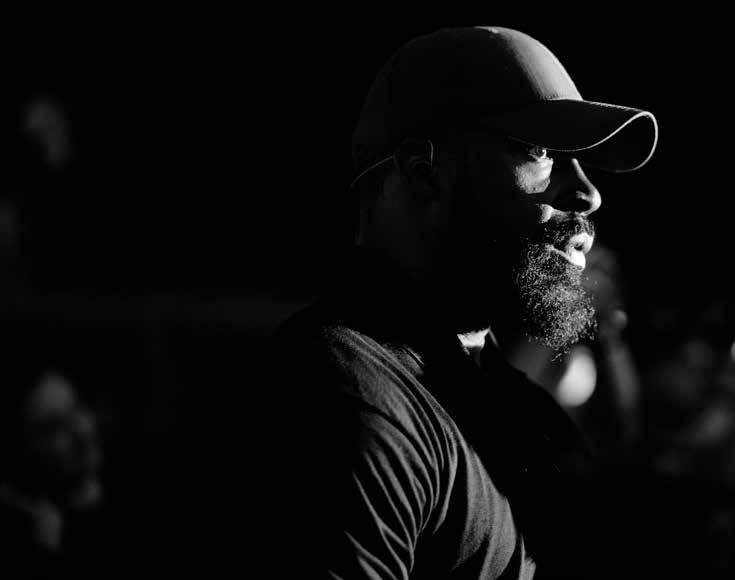
2 minute read
[New] TACTICAL FIREARMS
will see it’s a common element of defensive shooting. You as a professional must train effectively, understand your capabilities, your weapons capabilities and do everything possible to avoid any unnecessary casualties. But!
Now I hear a lot of Hollywood bullshit about protectors saying they would die for their client, but no one talks about if they would kill innocent people for their client? Lets go back the scenario of the conference room where the active shooter is firing at your client from behind the cover of innocent people, what are you going to do? Are you going to shoot the innocent people to clear the way so you can get kill shots on the active shooter? This might cost the lives of several innocent people, but you could save your clients life and the lives of many more others… What would you do? What would I do, well that depends on how much I am being paid…
Advertisement
For more considerations for working armed read my article “Working Armed Internationally”.
Close Protection Pistol Drill (CPPD)
The Close Protection Pistol Drill (CPPD)
I put together the Close Protection Pistol Drill (CPPD) as a test for students completing our tactical and combat pistol courses. The drill consists of 5X rounds on a standard qualification target at 2 Meters, 5X rounds at 7 Meters, 5X rounds at 100 Meters. I am a great believer in the term “Double Tap and Die”, so we put 5 rounds into the targets. 1. Identify target 2. Stabilize 3. Get a proper sight picture
I should not have to explain the first 2 phases, these are basic shooting skills. To effectively rapid fire you need to have a good grip on your pistol and smooth trigger control. Now, the part people seem to have trouble believing capable are the shots at 100 meters. In the videos on this page we are shooing on your standard upper body steel plate targets at 100 meters and beyond.
If you follow the below instructions and have a proper position (supported behind cover if required), grip, trigger pull and point of aim you will hit your target.
Take up the slack on the trigger
Get the final sight picture 6. Squeeze the trigger
When practicing ensure the range your using has a sufficient backstop, and you rounds will not go over it. Start shooting from a bench rest at your usual maximum range (30 Meters) at say a paper plate target and increase the range as your accuracy increases. It should not take long for you to be able to consistently hit or be within 12 inches of a standard silhouette qualification target at 100 meters, which is sufficient.

When shooting at 100 meters plus the bullets your firing will drop, and you will need to aim above your intended point on impact on the target. This is called aiming off. Different calibers, weights of bullets and brands have different drop rates. Below is a generic table
I put together that can be used as a guide for bullet drop at 100 meters. You will need to learn how your pistols shoot with your carry ammunition as results can very due to the makes and models of guns and the ammo being used.
Conclusion
Hopefully this article has addressed some of the questions about the relevance of being able to shoot at distance with a handgun for close protection. If you are working armed in the close protection business you must understand the only person you can rely on is yourself, especially if the shit hits the fan. You need to be able to react instinctively to hostile situations and not be limited by rules made for incompetent sheep. The terrorists and criminals have no safety or operational boundaries, and to counter them neither can you!
Orlando Wilson has worked in the security industry internationally for over 25 years. He has become accustomed to the types of complications that can occur, when dealing with international law enforcement agencies, organized criminal and Mafia groups. He is the chief consultant for Risks Inc. and based in Miami but spends much of his time traveling and providing a wide range of kidnapping prevention and tactical training services to private and government clients.
By Dale L. June

![[New] CLASSIFIEDS](https://assets.isu.pub/document-structure/230104162153-912c8f5e8d3aa85cf4d4f5ea11523339/v1/a5653236e2030a66d0d61cf5802c5bc1.jpeg)


